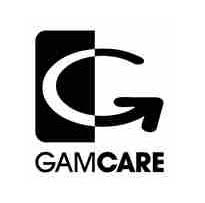 There’s no doubt poker boom was fuelled by the simplicity and exciting nature of No Limit Holdem (NLHE). It contained exactly what people look for in a card game: one that can be picked up in just a few minutes but can take an eternity to master the subtleties of. Why it took so long is a bit of a mystery. Slower, more math oriented games like Stud ruled for many years in the US, while 5 Card Draw was king in Europe until online poker made Holdem the game of choice. Even in those early days of online poker it was the limit tables that saw most of the traffic.
There’s no doubt poker boom was fuelled by the simplicity and exciting nature of No Limit Holdem (NLHE). It contained exactly what people look for in a card game: one that can be picked up in just a few minutes but can take an eternity to master the subtleties of. Why it took so long is a bit of a mystery. Slower, more math oriented games like Stud ruled for many years in the US, while 5 Card Draw was king in Europe until online poker made Holdem the game of choice. Even in those early days of online poker it was the limit tables that saw most of the traffic.
Now, almost 10 years on from the beginning of the boom, online poker is at a crossroads in many ways; legislation has taken the game away from some, and No Limit Holdem strategy is now so advanced thanks to discussion forums and video training sites, that even the fish are aware of the power of position and the 3-bet with air.
The Migration of High Stakes Poker to PLO
The hugely lucrative higher stakes NLHE games that started off at $10/$20 on Party Poker and moved up to $50/$100 and above have dried up. The time where there was a wide spectrum of skill levels amongst the pros has gone; these days the best regulars at $50/$100 only have a tiny edge over the average grinders, and the shrinking edge has the knock-on effect of creating massive variance as people have to get stacks in as a 55% favourite to make money rather than the 80% they may have been able to several years ago. Furthermore the economic situation has all but choked off the supply of dead money coming in at the top of the pyramid.
All of these factors have led to a paradigm shift at the high stakes tables. Around the time when Isildur1 was doing his best Batman impression, the high stakes games tended to be split evenly between NLHE and Pot Limit Omaha (PLO). There are a couple of reasons why PLO has risen in popularity. Firstly, it re-invigorated the games. Pros wanted to jump in and learn a new game, and the fish had something to attract them to the tables. While they were probably well aware that they were getting crushed at NLHE, a though process of ‘maybe I can get the better of them at this game’ prevailed and all of a sudden there were full tables and waiting lists at $25/$50 again. Another reason PLO became popular again is because it blurred the lines between the pros. Everyone knows a bonehead NLHE play when they see it now, but in PLO there’s much more room for someone to make a mistake and convince themselves it wasn’t so bad. There are a lot of unexplored strategies in PLO and opponents aren’t playing as close to ‘perfect poker’ as they would be at the NLHE tables. Ranges are wider, and thus harder to narrow down; the more room there is for hand reading skills, the bigger the potential edge and the potential for poor players to convince themselves they’re better than they are and that their approach to the game is the correct way to play.
The Transition to PLO at Smaller Stakes
At the lower limits, the same shift hasn’t occurred. NLHE is still by far the most popular game. There are a couple of reasons for this; firstly at the small to mid- stakes there’s an element of inertia and ‘if it ain’t broke don’t fix it’. Plenty of players are beating the $1/$2 and $2/$4 games using the same strategy they’ve been employing for years. They can 8-table without too much stress and some can even still put up three-figure hourly rates. Why would a player in this position want to abandon the cash cow in favour of learning a new game? The poker TV shows and marketing by the online rooms will always keep a steady flow of fish coming through the low stakes doors and losing their money. The second main reason for people staying put is variance. Variance in PLO is much worse than in NLHE. If you could make the same hourly rate at both, you’d be much better advised to do it in a game where your standard deviation is 80 big blind per 100 hands than one where it is 120 big blinds. In fact the additional variance can be so cruel that even if you’re a small (1-2 big blind per 100) winner in PLO your breakeven stretches could easily reach 500,000 hands quite regularly, while in NLHE the swings aren’t nearly as extreme. If you’re relying on poker for some or all of your income, you’d be better advised to even take a hit to your hourly rate to play NLHE over PLO due to the increased danger of going months without earning anything.




